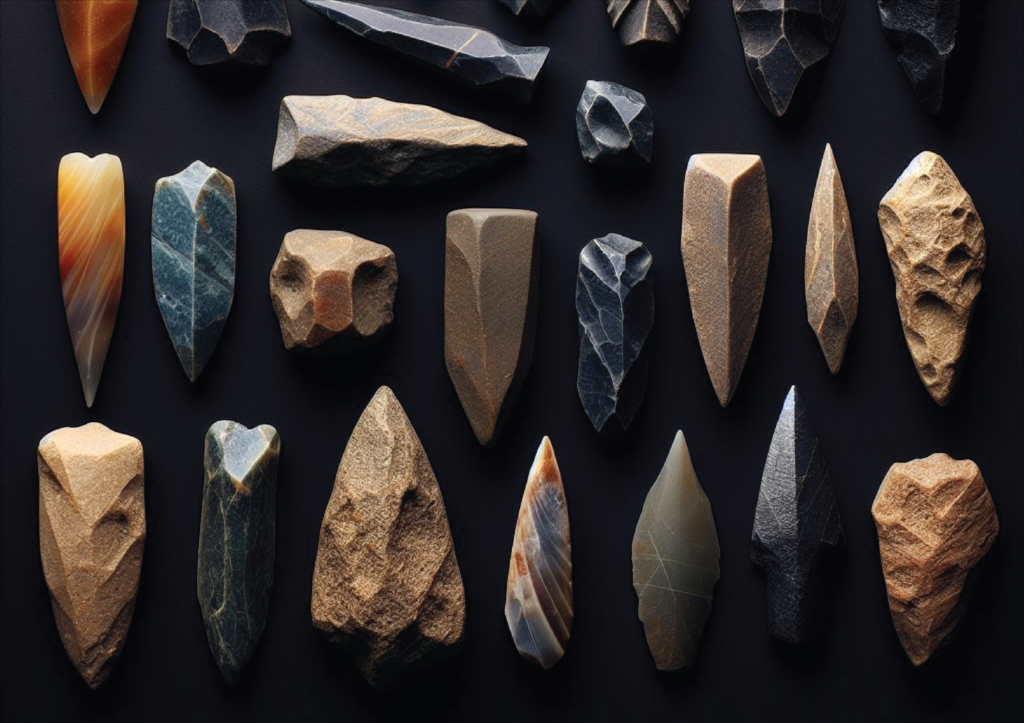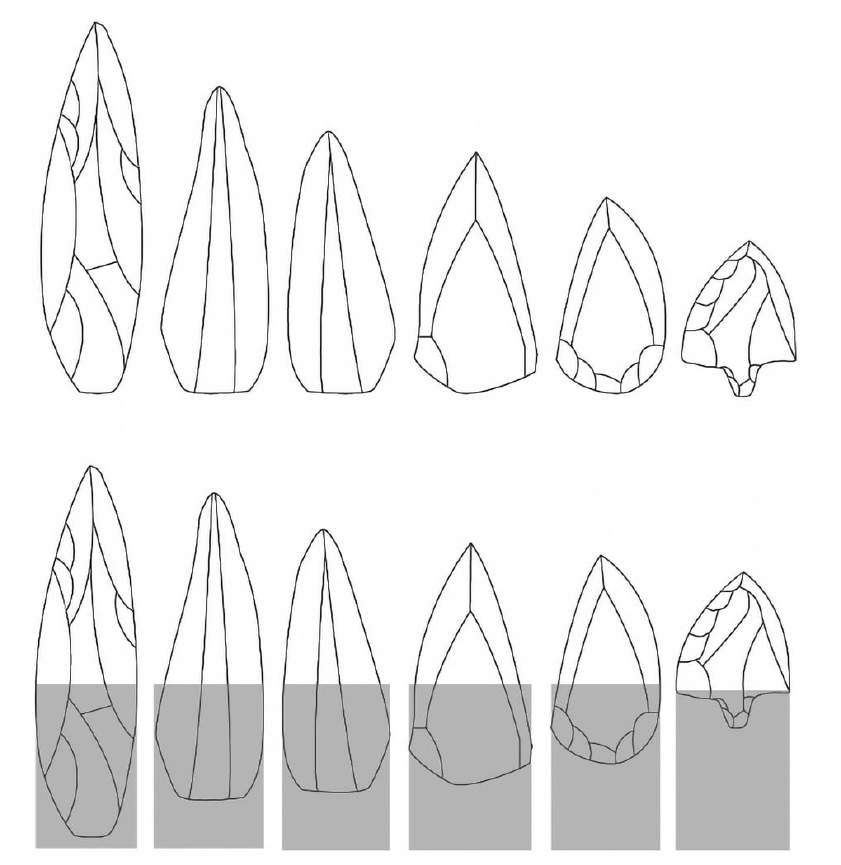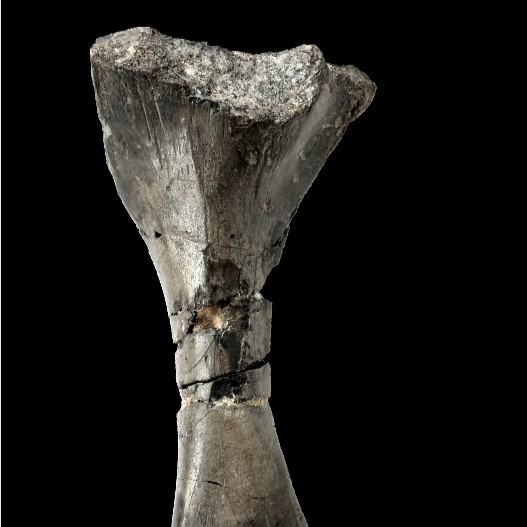Turning Point: New Insights into the Shape Variation of Middle Stone Age Tools

Stone tools come in a variety of shapes and sizes, but new research shows the attaching end is more varied in shape than the pointed end!
The study of ancient stone tools provides a fascinating window into the lives and capabilities of early human societies. Newly published research led by Dr Benjamin Schoville and his colleagues Precious Chiwara-Maenzanise, Dr Erik Otárola-Castillo and Dr Jayne Wilkins has yielded intriguing insights into the morphological variations of stone points from the Middle Stone Age across sites in South Africa. The research, “Function, Style, and Standardization: Is the Proximal or Distal End of a Middle Stone Age Point More Variable?”, published in Lithic Technology, investigates shape variations in stone points from the Middle Stone Age. These points, often used in weapons like spears and arrows, have two distinct ends: the proximal end, which attaches to the weapon’s shaft or is held in the hand, and the distal, pointed end, designed for cutting or stabbing. Contrary to what they expected, Schoville’s team found that the attaching (proximal) end exhibits a greater range of shapes than the pointed (distal) end.
PhD student Precious comments: “I find stone tools fascinating because they represent a critical milestone in human evolution and technological advancement. The development of stone tools marked the beginning of our ability to shape our environment and interact with it in more complex ways. It’s incredible to think about how our ancestors used these simple yet effective tools to perform a wide range of tasks that were essential for their survival.”
Stone tools are among the most enduring legacies of early human civilisations, serving as tangible evidence of our species’ journey through time. From the rudimentary choppers of the Oldowan culture over 2.5 million years ago to the sophisticated points and blades of the Middle Stone Age, stone tools have evolved in complexity, mirroring the cognitive and social advancements of human societies. The study of these tools, known as lithic analysis, provides invaluable insights into various aspects of ancient life. For instance, the materials used can indicate trade networks or geographical mobility. The design and wear patterns can reveal their specific uses, whether for hunting, food preparation, or other tasks. Precious adds: “Studying point variation provides clues to past function and style patterns in the Middle Stone Age. Variations in shape can indicate whether a tool was used for cutting, hunting, or other specific tasks.”

Moreover, stylistic elements can offer clues about social structures, cultural practices, and even symbolic thinking. The team employed a multi-faceted methodology to explore the morphological variations in stone points from the Middle Stone Age (MSA). The study began with a careful selection of stone tool points from various archaeological sites. Each tool point was then meticulously measured using computer software, focusing on both the attaching and pointed ends. Advanced statistical methods were applied to analyse these measurements to understand the shape variations in different parts of the stone points. The researchers had two key questions – first, whether the attaching end was more consistent due to the constraints of attaching it to a shaft, and second, whether the pointed end was more consistent due to its functional role. The most significant finding of the study was the greater shape variation in the attaching end compared to the pointed end of the stone points. This means that people back then had more freedom to be creative with the attaching end. In contrast, the pointed end appeared to be more standardised, likely because of its critical role during hunting or combat.

These findings have broader implications for our understanding of the Middle Stone Age period, known for its technological innovations and complex social structures. The variations in the attaching end of these stone points could indicate regional identities or even the early forms of cultural or individual expression. Moreover, the standardisation of the distal end points to advanced technological understanding and the ability to produce effective tools for specific functions.
The study by Dr Schoville and his team adds a new layer of understanding to the complex story of human evolution and culture. It not only highlights the technological prowess of ancient societies but also hints at the existence of cultural and stylistic variations that have been passed down through generations. The research also opens new avenues for further studies.
“Studying how the tips and bases of projectile points differ helps us better study ancient and recent spears. Avenues for future research include understanding how the shapes of these points have changed over time and across different places, especially by looking at the shapes of spears in museums and those used by contemporary cultures,” says Precious.





